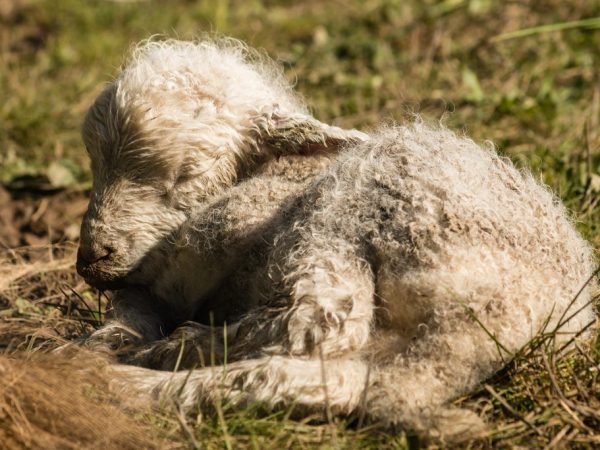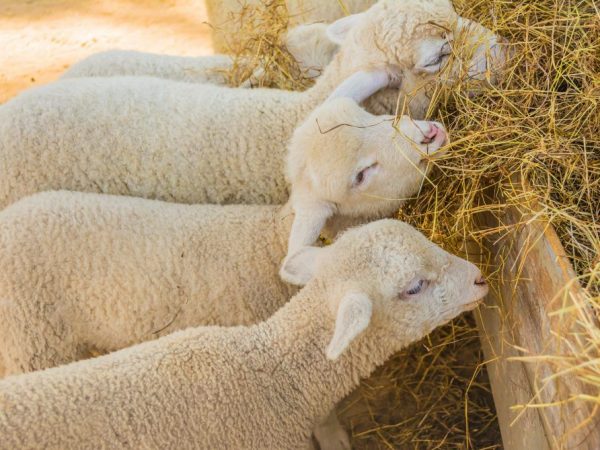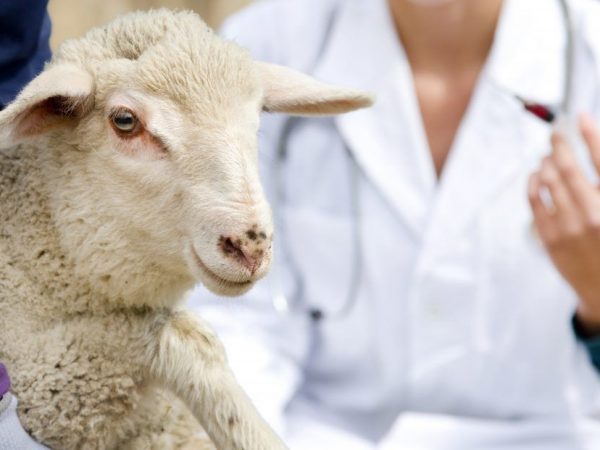Treatment of coenurosis in sheep
People who are engaged in breeding and raising small ruminants often face such a problem as sheep coenurosis. This is a disease that appears due to the invasion of the larval stage of the cerebral censurium.

Prevention and treatment of coenurosis in sheep
Basically, the disease occurs in small animals up to 2 years of age. The larvae that are born and develop in the brain of sheep destroy their nervous system. The name comes from the word tsenur. When cenurosis appears in animals, a bubble forms in their brains, which fills with fluid, as a result of which flatworms form in the brain. Treatment of the disease occurs through surgery. But such an operation is not performed on all animals, as it is dangerous for the life of the sheep.
The onset of the disease
Coenurosis in sheep appears after contact with grass, hay and straw. Pets are used to eating such food, and they infect the land on which the owner grazes them, as a result of which the disease completely affects the entire herd. Basically, sheep are infected from their definitive owners, wolves and dogs. Dogs and wolves are capable of secreting up to 500 thousand eggs every day.
When the animals begin to move, they throw their eggs into the air. The disease begins to develop from the poor living conditions in which the sheep are kept. Improper feeding lowers immunity and helps the coenurosis to get close to the animals. To prevent this from happening, you need to carry out preventive measures.

Coenurosis can occur after contact with grass, hay and straw.
Almost always, the disease affects only young sheep. When pets begin to eat grass, eggs enter their body and begin to actively grow there. After 14 days, the parasite grows to the size of millet. Then, after 1.5 months, they become 3 cm in length, and after 12 weeks - 3.5 cm in length. When the disease is already running, the parasites develop heads. This usually occurs 3 months after infection.
The appearance of pathology can be due to the following reasons:
- very weak immunity;
- poor living conditions for animals: a large amount of moisture and dirt;
- walking sheep in areas where animals that died due to this disease once walked;
- living under one roof of sick and healthy animals;
- living in the same room for dogs and sheep;
- lack of vaccinations and veterinarian examination;
- lack of prevention.
Disease treatment methods
In order to cure sheep from the described ailment, 2 methods are used:
- operative surgical intervention;
- chemotherapy.
When the first method of treatment is used, an operation is performed. They do craniotomy and remove the cyst that forms due to the development of the disease. When the cyst cannot be removed, the fluid is simply sucked out. After that, any antiseptic is injected into the brain, the wound is treated and the pet is quarantined.
If it is not possible to perform an operation, the animals are given chemotherapy. For this, special preparations are used and injections are given in the head.When the drug enters the body, the parasites begin to die.

Treatment methods for coenurosis
Clinical symptoms of the disease
Coenurosis of sheep develops in four stages.
- The first stage is the very beginning of infection and the first signs of the formation of the disease. The first stage lasts 2-3 weeks. It is impossible to understand that a disease has appeared, since there are no symptoms at all.
- At the second stage, acute signs of the disease begin, the larvae grow and move. This time takes from 3 days to 3 weeks. Animals lose their appetite, they become too shy.
- At the third stage, the cenura begins to grow in the brain. The symptoms disappear and the disease is very difficult to identify.
- The fourth and most recent stage begins in 3-7 months. At this stage, the bubble in the pet's head grows very much in size. The sheep begin to move strangely and turn around strongly. Many animals in stage four will die unless treatment is started.
The development of the disease depends on in which part of the brain fluid begins to collect and larvae grow. When the larvae have already attacked the brain, the sheep have problems with coordination. In addition to the listed symptoms, pupils may be enlarged.
Danger to humans
A person can also become infected with coenurosis, so you should be careful when working with small livestock. Symptoms appear after 2-7 days, and the incubation period is 20 days. The patient is pursued by constant fatigue, nausea, vomiting and severe headaches.
Also, cenurosis increases blood pressure, proteins and lymphocytes increase, the head begins to spin, the skin turns red, and it becomes difficult to breathe. When the disease destroys the spinal cord, severe irritability builds up, problems in the work of many organs follow, paralysis occurs.
People need to be treated in the same way as animals. You can see which side of the brain is affected with ultrasound.
Treatment of the disease
Cenurosis must be treated with surgery or chemotherapy. After the veterinarian has determined in which part of the brain the bladder is located, he begins to prepare tools for cutting the skull, then trepanation is performed and the liquid is sucked out through a small hole, and then the shell itself is removed.
In addition to the operation, chemotherapy can be carried out, this procedure is not too expensive and is carried out for almost all sheep. For this, a special drug is introduced, which leads to the death of parasites living in the brain of animals. When the helminths are destroyed, treatment of the inflamed areas begins.
Surgery is usually only done on breeding sheep or expensive breeds. For all other animals, only chemotherapy is used.
The wrong diagnosis quite logically leads to the wrong treatment. Symptoms of coenurosis can be seen during other diseases, such as the following:
- rabies;
- toxoplasmosis;
- dysteriosis.
Only a veterinarian can correctly determine coenurosis; it is forbidden to start treating animals on his own.
Preventive actions
The disease of coenurosis is very dangerous; not only animals, but also people can get sick with it. Worms begin to grow if you create all the conditions for them. The suitable temperature is 21-23 ° C. You can carry out preventive measures with the help of special decoctions. Parasites cannot tolerate a number of infusions:
- from wormwood, garlic and tansy;
- from ginger or coriander and other herbal preparations.
These decoctions can be drunk by dogs, humans and sheep to prevent coenurosis. If the disease has already begun to affect the brain, such methods will not help.
Pet care
If the treatment is positive, you need to look after the pet so as not to make it worse. If inflammation occurs after surgery, veterinarians will prescribe additional antibiotics.
To prevent the onset of the disease, you need to pay attention to the following:
- dogs should not be near sheep;
- animals need to be fed only with high-quality feed, you must also monitor their cleanliness;
- it is necessary to carry out prophylaxis on time and show the animals to the veterinarian in a timely manner.
Conclusion
Cenurosis is a very dangerous disease. This problem is inherent in animals under 2 years of age, in addition, there is a possibility that people and dogs can also catch the disease. It is possible to cure an ailment, but such a process takes a long time and costs a colossal amount of effort and expense. In order to prevent ailment and save money, it is necessary to carry out prophylaxis in time and look after the conditions in which the pets live.


